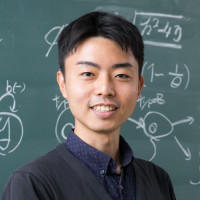Diversity of Asgardarchaota and Theoretical verification of the endosymbiotic theory
- Date
- April 28 (Thu) 10:00 - 11:00, 2022 (JST)
- Speaker
-
- Daiki Kumakura (Ph.D. Student, Graduate School of Life Science, Hokkaido University)
- Venue
- via Zoom
- Language
- English
- Host
- Daiki Kumakura
How did intracellular symbiosis occur and give rise to eukaryotic ancestor? This question has been considered to the two theories as three-domain theory and eocyte theory. Here I present asgard archaea, the archaeon closest to eukaryotes. Asgard archaea is an archaeon found at a deep-sea sampling site called Loki's castle at between Greenland and Norway. So all the closely related species are named after Norse mythology (Loki-, Thor-, Odin-, Heimdall-, etc.). Unlike other archaea, asgard archaea has many eukaryotic-specific proteins and is considered to be the closest to eukaryotes. In 2020, one of the asgard archaea species was finally successfully cultured. This archaeon was cultured and found to take on a branch-like structure. It is then hypothesized that intracellular symbiosis between this archaeon and the ancestor of mitochondria resulted in the ancestor of today's eukaryotic cells. In this talk, I would like to discuss with you the explanation of how we arrived at this hypothesis and how to construct a mathematical model.
This is a closed event for scientists. Non-scientists are not allowed to attend. If you are not a member or related person and would like to attend, please contact us using the inquiry form. Please note that the event organizer or speaker must authorize your request to attend.


